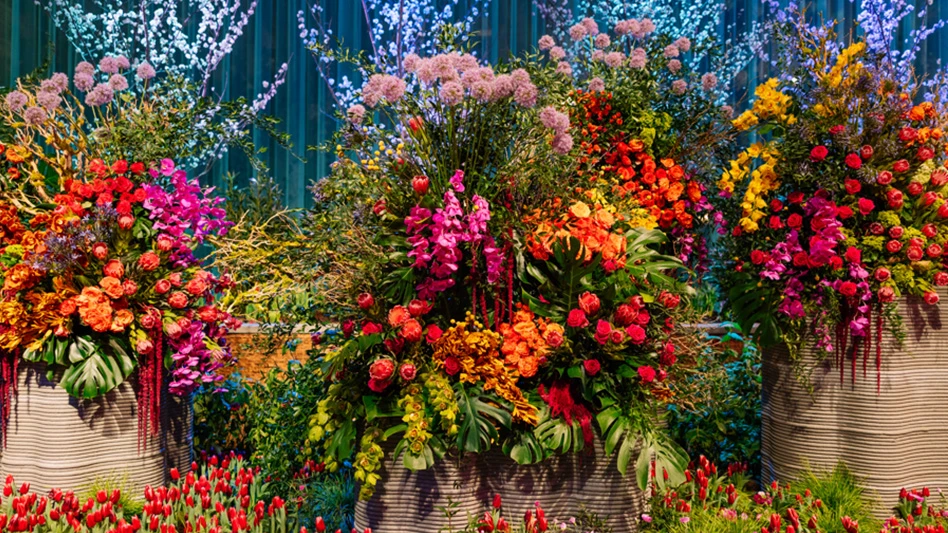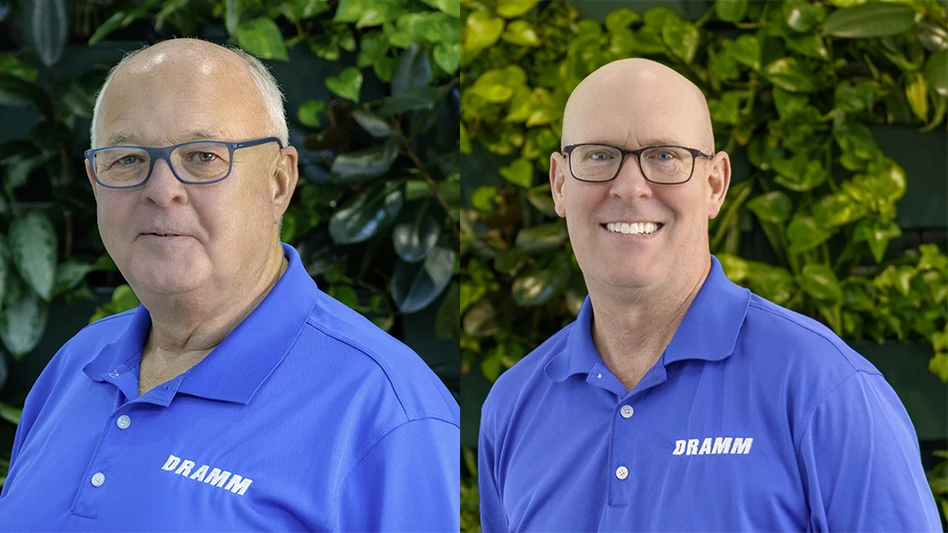
Jim Zampini’s unequivocal passion for plants and people provided him with boundless energy for decades. Jim provided the industry with a throng of interesting and exciting plants, and bestowed advice, knowledge and, above all, friendship to countless people across the globe. Jim was a plantsman and a gentleman.
Despite multiple heart ailments and surgeries, as well as bouts with cancer, those events didn’t give him pause to stop doing what he loved most — searching, grafting, trialing and marketing plants, and, of course, talking to people. He loved to talk, and he was a skilled storyteller.
“Dad could walk into a room, talk to anyone and almost immediately relate to them on their level,” says his daughter and business partner, Maria Zampini. “He had that homespun, salt-of-the-earth way about him that made people comfortable.”
Jim knew the value of building relationships, and he made it a point to keep in touch with his customers and friends. Even after email became the norm, he used the telephone to keep in touch.

“He called me every week to tell me about what he’d found or to ask about my work,” recalls Iain Hiscock of Commercial Nursery in Decherd, Tenn. “He always made personal contact, and he just had a way about him.”
Jim had two speeds — “stop and flat-out,” says Nicholas Staddon, longtime friend and marketing specialist at Village Nurseries in Orange, Calif. “I found him very inspirational. He was passionate about not only plants, but people, as well. And that’s why he was able to endear himself to so many people. Jim wanted his plants to be successful, but it was more about the other person and how successful they were with the plant. I was at Monrovia for many years, and we did a lot of our best work during that time together. Every few weeks he’d call. It was a great attribute. It brings home that one of the key foundation points of our business is personal contact.”

Jim’s contributions to the plant world are many, but some of his significant introductions include Weeping Candied Apple crabapple, his first patented plant; Lancelot crabapple, his most successful genetically dwarf crab; Celebration maple; Corinthian Linden; Golden Ruby barberry; Snow Fountains weeping cherry; Crimson Pointe upright plum; and Lemon Ice weigela, one of his newer introductions, Maria says.
Jim had a knack for marketing and naming plants, she adds. When it came to naming plants, he wanted to create a picture in the consumer’s mind. He came up with Weeping Candied Apple because he had fond memories of going to the fair, holding his father’s hand, and looking at all the big, bright red candied apples and wishing he could have one, she says. He also found inspiration for plant names from unusual places like InStyle magazine, nail polish names or even Bible names, she says.
“He really was good at coming up with names,” Staddon says. “He knew you needed a snappy trade name for consumers and landscape architects to remember the plants. Take Snow Fountain, for example, what a great name, and it still remains an excellent seller.”

A family tradition. Jim was born and raised in Lake County, Ohio, which for years held the title of “nursery capital of the world” and “the rose capital,” Maria says. Jim’s father, Felix, worked for railroad, but started growing multiflora rose understock on a ¼-acre plot in Painesville, Township in 1946, while Jim was in high school. Felix made an extremely significant discovery while working his small plot of land.
“My grandfather discovered the secret to propagating roses, and began grafting multiflora roses with a clean shank, or no roots,” she explains. “That was really what helped his business take off, allowing him to run Felix Zampini & Sons nursery full-time.”
In 1949, by bartering rose understock, the nursery purchased its first tractor for $250. It was made with a Model A Ford on the front and a Greyhound bus at the rear. That same year, Jim graduated from high school, and was working part-time at the family nursery and as the produce manager at Fisher Foods in Geneva, Ohio.
“Dad learned a lot by working at the grocer, which would benefit him later as he took over the nursery,” Maria says.
In 1957, Felix purchased 25 acres from Nicholas Messman, one of Jim’s early mentors, and Jim went to work full-time at the family nursery. In 1958, Jim’s sister Patty set him up on a blind date with a young nurse named Margaret. The two were smitten, and in 1961 became husband and wife. Jim was quick to give Margaret credit for his success.

“Dad was the first to say that behind every good man is an even better woman,” Maria says. “He knew that without her providing constant and consistent strength, stability, and love in their home, he would never have been able to do and accomplish all the things he did in his lifetime.”
In 1962, Felix retired, and Jim assumed total ownership of the nursery and renamed it Lake County Nursery Exchange.
A diverse history. The ’70s and ’80s proved to be an exciting time of change and growth for Jim and the nursery. In 1973 he became president of the Lake County Nurserymen’s Association, and in 1974, he opened a retail garden center in Perry, called Champion Garden Towne. At first, the retail operation was used as an outlet to sell excess nursery stock, but it morphed into a destination garden center, carrying fresh produce, gourmet foods, local wines, cut flowers, gifts, and gardening tools and implements.
“Dad did cross-merchandising in the garden center before anyone did. He was ahead of his time. It’s something he learned from his produce days,” Maria explains. “It was a stop for agritourism before that term was even invented. We had weekend festivals that became family traditions for many of our customers.”
In 1980, Jim started a new division of the nursery dedicated to new plant research and development. It was created to test and evaluate plants discovered by Jim, Lake County Nursery employees, and other hybridizers. It was a move that would allow Jim to pursue his zeal for new plants for nearly 40 more years.

Around that same time, Les Nichols of Penn State’s extension center, encouraged Jim to work on developing new hybrid plants from the Malus genus.
“At that time, that particular genus was one that could be expanded, and they recognized that they could breed for more disease resistance, smaller fruit and ones that had more than one season of bloom, as well as good fall color,” Maria says.
It was a serendipitous partnership, because Jim became quite famous for his crabapples. Jim also formed a kinship with Dr. Don Egolf of the United States National Arboretum, introducing many of Egolf’s selections through Lake County Nursery.
A new beginning. In 2004, Jim closed the garden center to allow for more time to devote to the research and development of new plant introductions. A few years later, Maria and Jim decided to completely dedicate their time to new plants, left the wholesale nursery and started UpShoot, a boutique marketing firm dedicated to introducing new plants to the market.

“He wanted to spend time doing what he loved most and what he did best, and that was discovering and marketing new plants,” Maria says. “As business partners, we played on each other’s strengths. His skill was to find new plants that were sometimes right in front of him, or to ferret out a new plant that no one would have likely found.
“He didn’t wear a white lab coat. He said it was him and God out there looking for plants. He told our friend John Lewis, ‘You’ve got to look down and you’ve got to look up.’”
Jim was still working eight-hour days into his 80s, with a nap or two during the day. He’d still graft plants, clean up the garden, travel, and make his famous calls.
“We can only hope that at his age, we can have as much enthusiasm about life, much less plants,” Maria says. “Even though the guy’s heart was practically duct-taped together, his hearing was bad and his eyesight wasn’t great, he could spot a plant at 75 miles per hour.”
Maria and Jim had a philosophy of taking one day at a time.
“I’ll keep doing that and stay true to his character,” she says.

Explore the July 2017 Issue
Check out more from this issue and find your next story to read.
Latest from Nursery Management
- GIE Media Horticulture Group wins five regional 2025 Azbee Awards of Excellence
- Get to know Pat Reilly with NewGen Boxwood and the American Boxwood Society
- Terra Nova Nurseries introduces rust-free and disease-resistant heucherella
- John T. Nickel, founder of Greenleaf Nursery Co., passes away at 89
- Three tours offered at 2025 Farwest Show
- Garden Media Group announces sixth annual Women in Horticulture Week
- Star Roses and Plants announces National Knock Out Rose Day
- The Growth Industry Episode 4: How federal budget cuts are affecting horticulture nonprofits





